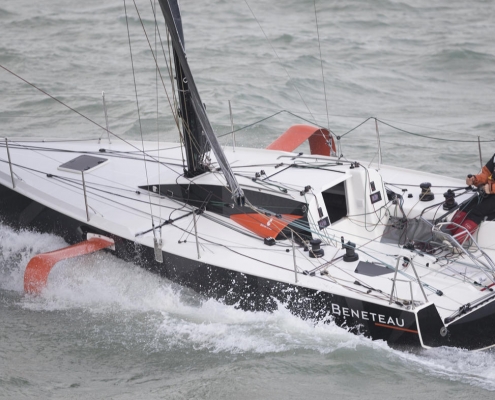Basic Singlehanding
Beginner singlehanded Sailing course
Starting at the beginning. Learn all the basic skills you will need to handle a 30 to 35 foot single hand racing yacht. Get your sails up and down. Lean to tack and gybe alone. Begin to explore your personal limits and discover new things about yourself.
Day 1
Morning:
- Intro to the boat
- Goals for the week
- Shore drills looking at hoists and drops
- Tacks and gybes
Afternoon:
- Basics of hoisting sails
- Basics of dropping sails
- Tacking and gybing basics
Late afternoon:
- Debrief and basics of recording information for performance
Day 2
Morning session:
- Tacking and gybing drills looking at how to keep the manoeuvres simple and repeatable
Afternoon:
- Upwind and downwind boat speed and introducing some pressure to manoeuvres
Late afternoon:
- Debrief and basics of weather routing
Day three
Morning session:
- Basics of starting double handed looking at timed runs and keeping things as simple as possible.
Afternoon session:
- Basics of reaching and peeling sails, working on how to effectively peel on a reach.
Day 3
Morning session:
- Basics of starting double handed looking at timed runs and keeping things as simple as possible.
Afternoon session:
- Basics of reaching and peeling sails, working on how to effectively peel on a reach.
Day 4
Morning:
- Introduction to a course and getting the boat around it.
- Looking at sailing an inshore course under low pressure.
Afternoon:
- Off to prepare for the offshore the next day
- Looking at introduction to routing and concepts of weather routing with group discussions.
Day 5
Morning:
- Offshore start
- Aiming to finish 7-8 pm into the early night.
- Race to be coordinated from shore with visits out to the boats by rib when the fleet gets separated boats get together and restart. Keeps the boats together for safety but also for performance as better training conditions.
- The idea is for the students to try the techniques they have learnt over a longer course and start to introduce the feeling of tiredness and darkness so they can understand and learn the reasons for keeping things simple.
Day 6
Morning:
- Debrief of the race
- Inshore races to test what they have learnt for boat handing skills and its a good way to finish the week.
- Week debrief


